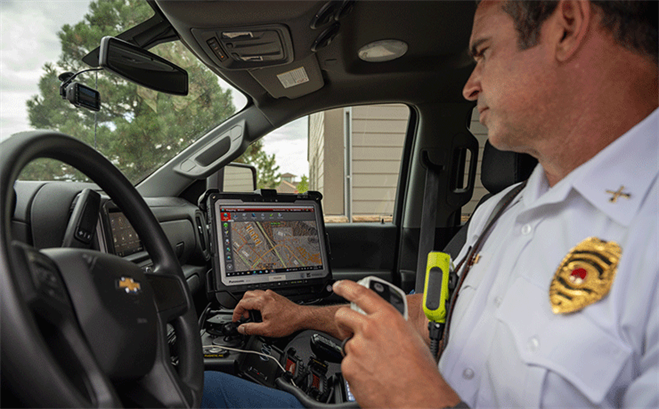Call Center Transforms Operations With Tyler’s Fire Suite
May 07, 2024 by Kate Nadolski

With multiple agencies to dispatch for, telecommunicators in a 911 call center can experience a lot of pressure when dispatching for the county — especially if these agencies are using varying solutions and processes.
Lorain County 911 in Ohio dispatches 48 agencies, consisting of 23 full-time, hybrid, and volunteer fire departments, as well as 14 law enforcement agencies.
Initially, Lorain County 911 was dealing with a mix of solutions that were interfaced in and out of the data center with three primary systems and upward of seven interfaces. Lorain County’s B4 Consultant, Christie Messinger, said this was causing major issues trying to get calls out for service. There were also issues with high costs, hesitancy about the reliability of their technology, limited data sharing capabilities, and time-consuming processes.
The call center needed a better way to improve efficiency across the board for all agencies they were dispatching for. They were also looking for a solution that they could always rely on, especially during critical events.
Lorain County 911 implemented Tyler Technologies’ Fire & EMS suite to streamline the technology and processes. The benefits within Enterprise Fire Field Mobile, Fire Prevention Mobile, and Tyler’s partner solution, Emergency Networking, exceeded the agency’s expectations tenfold.
Prior to working with Tyler, Lorain County 911 was spending thousands of dollars installing mobile data terminals (MDTs) into service vehicles. Avon Lake Fire Chief, Jeremy Betsa, said this was not efficient.
“First responders had to connect to the virtual private network (VPN) for the county’s internal software to access computer-aided dispatch (CAD) data and these were costing $7,500–$10,000 per vehicle and still it was not reliable,” Chief Betsa said.
With Enterprise Fire Field Mobile, our crews have been able to swap the MDTs for iPads, allowing them to access mission-critical CAD data on the go. The cost of these is substantially lower and they can be changed out on the fly. It has reduced cost by approximately $5,000 dollars per unit and improved efficiency.
Jeremy Betsa
Avon Lake Fire Chief
“With Enterprise Fire Field Mobile, our crews have been able to swap the MDTs for iPads, allowing them to access mission-critical CAD data on the go,” Betsa said. “The cost of these is substantially lower and they can be changed out on the fly. It has reduced cost by approximately $5,000 per unit and improved efficiency.”
With the Fire & EMS Suite, Lorain County 911 and its agencies experienced real-time tracking capabilities which resulted in quicker response times and easy access to mission-critical data along with the ability to share it with other agencies seamlessly.
Before, fire crews had to spend hours daily collecting information and manually inputting it into their reporting system. Chief Betsa said the automation of this process has saved valuable time.
“One simple switch — having addresses, times, numbers, and call information from the dispatchers automatically flow into the reporting system — saved hours of data input every day just for my agency, so it’s exponential throughout the county,” said Betsa.
The agency quickly learned their solutions were reliable when they were put to the test during a massive storm that brought major flooding and the need for several water rescues. During this time, most of the technology and main communication between agencies and the 911 center were cut off.
Utilizing Tyler’s Fire & EMS suite, one of Lorain County 911’s agencies, Elyria Fire Department, stayed in continuous communication with the call center and was able to successfully conduct those water rescues and save lives.
“These smart tools really provided the stable technology we needed to lean on during that critical operation,” said Messinger.
Lorain County has experienced a significant increase in cost savings, operational efficiencies, enterprise level data-sharing, time saved, and the ability to provide an overall better service to their community through the use of the agency’s technology.